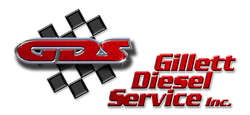Vehicle manufacturers are adding turbos at an extraordinary rate, and over the coming years, the turbo market is expected to grow to more than eight million turbocharged vehicles. As this number of turbocharged vehicles increases, more technicians and vehicle owners will see vehicles with turbocharger issues. Unfortunately, there's already confusion in diagnosing turbo problems. Here's a comment from one of our customers
"How can I visual check a turbo to help know when a new turbo is needed."
To help technicians and vehicle owners diagnose turbocharger repairs, here are a few important diagnostic and repair tips to keep in mind. As a note upfront, most turbocharger diagnoses (aside from noise and low power issues) require scan data and an understanding of operation at the technician-level.
What Causes a Turbocharger to Malfunction

Symptoms of a malfunctioning turbocharger include loss of power, excess smoke, high fuel consumption, overheating, high exhaust temperature, and oil leaks from the turbo. But it’s important to note that defects in other components can produce the same symptoms. Before wrongly attributing the issues to the turbo, remember that turbo performance can only be impaired by mechanical damage or blockage caused by debris.
Signs of a Damaged Turbocharger
If you hear whistling noises coming from the turbo, it’s likely due to an air leakage caused by pre-turbine exhaust gas or air leaks. To narrow the diagnoses first check all of the joints. If the noise continues, check the turbocharger clearances and wheels for housing contact.
If the turbocharger rotor assembly has seized up or is difficult to rotate, the problem is likely tied to the break down of the lubricating oil. When the oil degrades, it can lead to carbon buildup in the bearing housing. The carbon buildup will restrict rotation. Two other issues that can cause the rotor to seize up include insufficient or intermittent drop-in oil pressure and dirt in the lubricating oil. Another important detail to keep in mind is that a turbocharger has specific axial and radial rotor clearances. Sometimes, the clearances can be misdiagnosed as worn bearings. In reality, clearances that are out of specification may be associated with a lubricating oil issue. Check for insufficient oil, dirt, and oil contamination with coolant.
To determine if the turbo has been damaged by foreign material, inspect the turbine wheel or impeller. You will clearly see any foreign material that has entered through the turbine or compressor housings. If the blades are damaged, the turbo is already destroyed. Look for metal that has come off the turbo in the intake tubes. Metal particles in this area may indicate a damaged engine.
Common Trouble Codes
Two typical diagnostic trouble codes for turbos include Boost Codes (underboost) or (overboost), and Actuator codes. If you’re receiving an underboost code, the issue could be a wastegate that’s stuck in the open position or a leak between the compressor and throttle. Causes of overboost, on the other hand, include a wastegate that’s stuck in the closed position, a wastegate vent solenoid that’s stuck in the vent position, or leaking or disconnected control hoses.
When diagnosing and repairing boost-related trouble codes, here’s a helpful repair tip to keep in mind: turbocharger operation can be affected by a dirty intake air temperature sensor. That’s because the dirty sensor is unable to pass temperature differences quickly enough. To fix the issue, remove the intake air temperature sensor from the intake manifold and clean it using either carburetor cleaner or bead blast.
Choose the Right Replacement
Once you’ve diagnosed your turbo and determined that you need a replacement unit, remember that Gillett Diesel Service offers both 100% new and quality remanufactured turbochargers.
Using extensive research to determine the numbers needed to compete in the turbo market, Gillett Diesel offers full-line coverage for all turbo applications. Gillett Diesele also offers an array of related components, including turbo actuators, turbo oil drain tubes, and turbo speed sensors.

